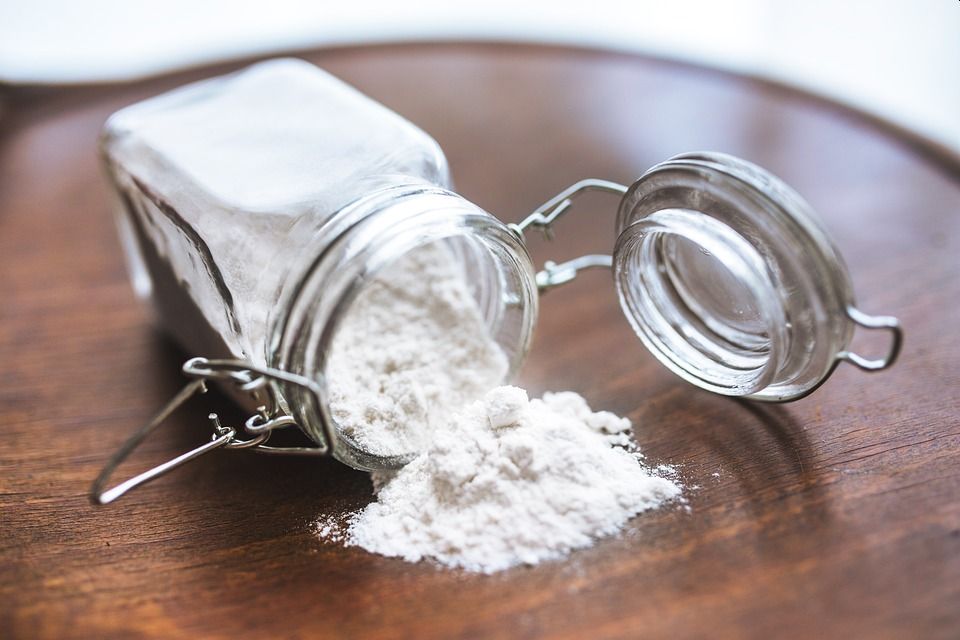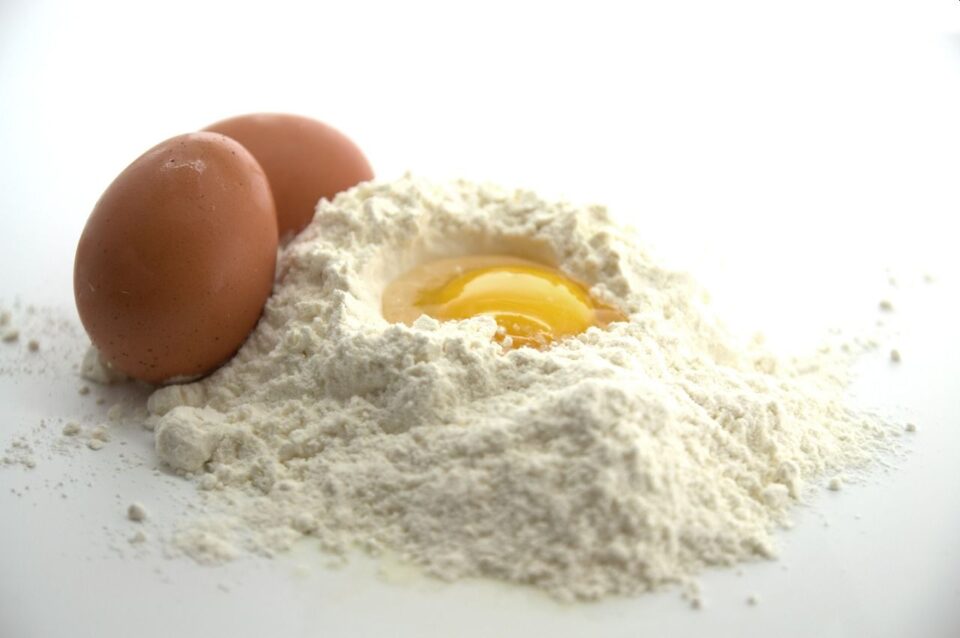There can be times when you need suitable spelt flour substitutes. Though the flour has been around for a very long time and is seeing a resurgence in its popularity, there still might be plenty of occasions when an alternative or substitute is desirable.
Best substitutes for spelt flour are wheat flour, buckwheat flour, einkorn flour, coconut flour, and potentially other types of flours like oat flour or rice flour.
Your choice of substitute can depend on several factors, including availability, cost, and gluten content. As such, I’ll keep notes on these when discussing the substitutes in detail.
Table of Contents
Quick Notes On Spelt Flour And Substitution Characteristics
Spelt flour, also known by the name of Dinkel wheat is an old food grain that used to be quite popular until the almighty wheat swept the scene. With the new focus on healthy and diversified eating, spelt flour is back in vogue.
It has a high protein content, which lends some credence to its labeling as a health food. On that note, it is worth pointing out that spelt flour contains gluten. There are claims of this flour having less gluten than wheat, but it does have gluten nevertheless.
While spelt flour can stand on its own as a food grain, many modern recipes do use it as a replacement for wheat. Another case for its use is healthier eating or in cases where a person may want to diversify their food intake or reduce their dependence on wheat.
Closely related to wheat it might be, but it’s not wheat. For most markets, spelt flour is more expensive than wheat, in fact, notably so, which might also be a reason for seeking its substitutes. Another reason would be availability. While it is somewhat readily available in some European nations like Germany and Austria, getting hold of spelt flour can be difficult outside these regions.
Spelt flour has something of a nutty flavor with some tanginess. The texture is a bit coarse and there is usually a bit of brown coloring to the white flour.
This also brings us to the types of spelt flour generally available:
- White spelt flour: Made from the endosperm of the spelt flour, it is analogous to conventional wheat flour.
- Brown spelt flour: Made with the whole grain of the spelt flour. This is similar to whole wheat flour.
Though spelt flour is common for baking it is currently more popular as the key ingredient for artisanal bread though its use in conventional recipes is also notable.

The Heart Of Spelt Flour Substitution – Water Content!
Before discussing the suitable substitutes for spelt flour, one aspect of the substitution merits some attention – the water content.
Most recipes that use spelt flour (or any other flour for that matter) will have a step where you make dough. And that’s basically where water meets the flour. The amount of water needed for the dough will vary by the type of flour.
As such, while substitution might say that a cup of spelt flour can be replaced by a cup of einkorn flour, the bigger change would be the water content. In this specific example, einkorn flour needs less water than spelt flour. Similarly, changes to water needs would be apparent with other flours as well.
So, while making the substitution, watch out for the water content. A good place to start is to use one-quarter or one-third of the water you would generally use. Add more if necessary. Remember, you can always add water to the dough, but you can’t get the water out!
Best Spelt Flour Substitutes You Can Use
1. Wheat Flour (Conventional Flour, All-Purpose Flour, Whole Wheat Flour)

The simplest alternative to using spelt flour is wheat flour. It is similar in flavor to spelt flour and behaves quite similarly in baking and cooking. Besides, wheat can present a finer texture and might be more familiar to work with. It’s also rather easily available in most kitchens.
In choosing wheat for the substitution, it helps that many modern spelt flour recipes use this flour as an alternative to wheat flour. So, in many cases, you’d be simply following the old recipe. Also, this substitution works well for recipes that use spelt flour as the original ingredient,
Adding some wheat bran to the flour during the substitution can help make the texture a bit coarse and more akin to what one would expect from spelt flour.
Using wheat flour as a substitute for spelt flour can be a direct change. When substituting white spelt flour, you can use conventional wheat flour or all purpose flour.
If the recipe is using brown (or whole) spelt flour, the substitute to use would be whole wheat flour. In all cases, the substitution can work in a 1:1 ratio.
2. Buckwheat Flour

When you want to go gluten free, buckwheat flour is amongst the best spelt flour substitutes. It is usually easier to source than spelt flour, though it doesn’t quite offer any pricing advantages. There is a difference in flavors as well, with buckwheat being more earthy and nutty as compared to the nutty-tangy flavor of spelt flour.
Another difference is texture, where buckwheat is more powdery and fine, while spelt can be comparably rougher.
However, the differences are not huge and can be worked with when managing a substitution. In most cases, the changes are acceptable.
It’s worth adding that despite its name, buckwheat is not directly related to wheat. Both these plants and resulting flours are different.
Now that we’ve considered the changes a substitution like this can bring, there is the matter of working with gluten-free flours. Since gluten is the binding agent for wheat as well as spelt flour, a substitution would require a bit of additional help.
For many recipes, this can be as simple as using eggs with buckwheat flour to work as the binding agent.
Another approach would be to use a starch and binder like xanthan gum. Adding a bit of potato flour to the mix can help make baked goods feel lighter and airy.
In fact, many commercial gluten-free flour products include starches like xanthan gum or tapioca flour, along with some potato flour or potato starch to achieve suitable binding properties.
When using buckwheat flour in place of spelt flour, you can do an equal 1:1 substitution. But do remember that you will also have to add additional binding agents to work with recipes and therefore, some adjustments might be necessary.
3. Einkorn Flour
As a grain and flour, einkorn is another ancient food to look at. In fact, Einkorn was amongst the first plants to be domesticated and cultivated. That said, einkorn is a type of wheat and is also known as einkorn wheat. Though in flavor and texture, it is somewhat similar to spelt flour.
Considering it is a type of wheat, einkorn contains gluten. It is also a bit coarse compared to conventional wheat, which gives it a texture similar to spelt flour. Although, if cost is a motivation for substitution, einkorn flour does not offer much of an incentive.
When using einkorn flour to substitute for spelt flour, it’s possible to manage the substitution in a 1:1 (equal ratio). Thus, the change is both convenient and straightforward.
4. Coconut Flour
Coconut flour is fast becoming a favorite for use in gluten-free baking. As such, it can replace most flours for baking purposes, including spelt flour. Since this flour is derived from coconuts, it does bring a subtle coconut flavor to the recipe. And although this is different from the nutty flavors of spelt flour, it is often an acceptable change for substitution and gluten-free baking.
This gluten-free flour needs a binder for best results during baking. For most situations, eggs can fulfill the role of the binder. Those who want to try a vegan or vegetarian alternative can use xanthan gum instead, which works rather well with coconut flour.
5. Other Flour Options

So far, I’ve discussed some common and popular options that work as excellent spelt flour substitutes. However, there are many other flours that can take on the role just as well, and can be used as substitutes or alternatives to spelt flour depending on your recipe and replacement needs.
Discussing these flours individually would make this article unnecessarily long without adding much value. For the sake of brevity, I’ve chosen to list them here as a quick and easily readable style with key information points.
So, some other flours you could consider as spelt flour substitutes are:
- Emmer Flour: Much like einkorn flour, this is an ancient variety of wheat. It contains gluten and behaves much like einkorn flour or wheat flour when used as a spelt flour substitute.
- Rice Flour: Cost-effective, gluten-free, and more neutral tasting alternative to spelt flour. Brown rice flour can work as a substitute for brown spelt flour. Will need a suitable binder like xanthan gum or psyllium husk when used for baking.
- Sorghum Flour: Popular gluten-free flour for baking, can be an acceptable alternative to spelt flour. Sorghum flour is slightly more cost-effective for use. Does require a binder when used for cooking.
- Quinoa Flour: Much like spelt flour, quinoa flour is popular as a health food. Its nutty-bitter flavor can be an acceptable alternative to spelt flour’s nutty-tangy flavors.
- Oat Flour: This flour has been rising in popularity, thanks to the focus on healthy eating. While oat flour has a notably different texture compared to spelt flour, if desirable for cooking needs, it can be an acceptable alternative to spelt flour.
- Almond Flour/ Almond Meal: As with coconut flour, almond flour is a popular flour alternative used in gluten-free baking. It works deliciously well and brings the goodness of almonds to the recipe. Using a binder will be necessary to get best results when baking with this flour.
- Other Flours: Well, here’s the thing. This list of substitutes for spelt flour cannot be exhaustive. Depending on your needs, local availability, and cooking preferences, there can be several other flours that could work. Some examples include amaranth flour, barley flour, kamut flour, and perhaps many other workable options.
Getting Things Right With Spelt Flour Substitutes
As noted in this discussion, there can be several substitutes of spelt flour, depending on factors like availability, price, diet preferences, and more. So, as long as you know your way around baking, you could work with the best available options to replace spelt flour in your recipe.
That said, the most suitable substitute for spelt flour is wheat flour, the common and most popular type of flour available. Should you choose to go gluten-free, options like buckwheat flour, coconut flour, and even sorghum flour can work just fine. Those who would like to expand their choices or want further details can take a look at some of the most popular and well-known options listed here.

